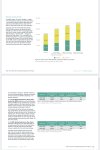• Just over one third of all Route 39 inbound riders (2,180) board at Forest Hills Station. This is by far the highest boarding stop on the route (no other stop reaches 400 daily boardings).
• Both boardings and alightings are very high along South Street and Centre Street, with a total of 1,440 boardings and 900 alightings.
• A total of 870 passengers board and 360 alight along South Huntington Avenue. The VA Hospital stop along this section is one of Route 39’s lowest ridership stops.
• Ridership activity increases along Huntington Avenue. The two stops before the Longwood Medical area serve 510 boardings and 670 alightings.
• The three stops that serve the Longwood Medical Area serve a total of 620 boardings and 1,420 alightings. The highest ridership stop is Huntington Avenue at Fenwood Avenue, which is the stop closest to the Brigham and Women’s Hospital complex off of Francis Street (190 boardings and 730 alightings).
• A total of 210 passengers board and 760 alight at the remaining three stops on Huntington Avenue, two of which serve Northeastern University.
• A total of 70 passengers board and 350 alight on the jog over to Boylston Street via Belvidere Street and Dalton Street.
• A total of 52 passengers board and 310 alight at the two stops on Boylston Street before Copley Station.
• 30 passengers board and 480 alight at Boylston Street at Dartmouth Street, which is the stop closest to Copley Station.
• 510 passengers alight at the final stop at Back Bay Station.

